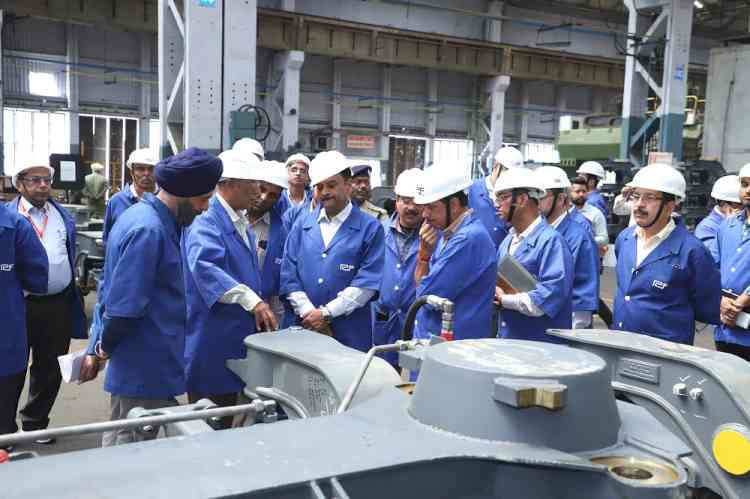Joint Replacements: Giving New Lease of Life to People- By Dr Rajeev K Sharma
Author. Delhi resident M Khanna was 77 years old when he decided to go for knee replacement procedure. Age-related osteoarthritis had damaged his knees, restricted his movement and prevented him from living a normal life. The loss of normal...


Author.
Delhi resident M Khanna was 77 years old when he decided to go for knee replacement procedure. Age-related osteoarthritis had damaged his knees, restricted his movement and prevented him from living a normal life. The loss of normal mobility was all the more disconcerting to him since he was used to a very active lifestyle.
However, after undergoing total knee arthoplasty on both knees, Khanna found himself adept at not only performing his normal daily routines like walking, going to the washroom, and climbing stairs with ease but amazingly also returned to playing his favorite sport – golf. Till a few years back, even doctors would have been surprised by the sight of a septuagenarian playing a high impact sport after knee surgery. Not any more! Today, technological advancements in the field, better implants and better surgical methods have ensured that a joint replacement surgery is life changing.
Joint pain, stiffness, difficulty in walking and rising up from a seat are common problems people experience with ageing joints. However, sometimes the joints become so ineffective that even small tasks like walking up to the washroom and finishing your ablution become a daily battle. Today, with the advancement of medical techniques in the field of joint replacement, people living with arthritic joints do not need to suffer endless pain and discomfort.
Every year, thousands of patients in India undergo knee or hip replacements and get a new lease of life. The beneficiaries are not just septuagenarians but also relatively younger patients in their 50s who chose to undergo the procedure to prolong their active and productive lifespan. In some cases much younger patients may need the procedure due to injury, early onset arthritis or congenital bone deformity.
Why Knee Replacement?
A knee functions as a joint between the upper leg bone and the lower leg bones. The bones, the joints and their edges are covered by cartilage that keeps the movement smooth and prevents friction between the edges. With years of wear and tear, the surfaces where these bones meet can become worn out. The reasons may include age related wear and tear, severe knee osteoarthritis, inflammatory arthritis, rheumatoid arthritis, and other general arthritic conditions. This makes movement extremely painful and effectively bars you from leading a normal life. Climbing stairs becomes a problem, walking long distances becomes difficult and even bending is not possible.
In such cases the aim of knee replacement is to make life easier, relieve pain, improve quality of life and enable the patient to perform normal day to day functions with ease. Knee replacement is mostly conducted on older patients as it is they who require it more. However, in younger patients, the results of knee replacement are often spectacular. A 55 year old person, will recover better, and would be able to lead a more normal life after knee replacement.
Arthritis is of two types – osteoarthritis which is the normal age-related wear and tear of joints; and rheumatoid arthritis – an autoimmune disorder in which the body’s immune system attacks healthy tissue including joints. Osteoarthritis is by far the more common affecting most elderly people, who have overused their joints over the years resulting in wear and tear of the cartilage. Arthritis not only causes pain in the joints, but makes bending, walking, and even rising extremely difficult.
Prolonged restricted movements, apart from deteriorating quality of life and productivity, also lead to other health complications as the patient is unable to perform even basic physical exercise. So, osteoarthritis or other joint-related problems should not be taken lying down.
Improvements in Knee Replacement Technology
Till two decades back, a joint replacement procedure was considered a difficult procedure with longer recovery time, and inadequate recovery outcomes. In recent years, however, better techniques have made this procedure better, patient-friendly with better outcomes.
Improved Implants: Much research has gone into making orthopedic implants better, more durable and more functionable. Researchers and manufacturers are devising better implants today to suit the needs of a cross section of people of multiple shapes and sizes. Unlike earlier when there was a standard implant available for men and women, today we have Gender-Specific Knee implants which take into account the different anatomy of men and women. Another such advancements is the Asian Knee which takes into account the fact that people on the Eastern side of the globe are smaller in stature than Caucasians and need smaller implants to fit in better into their knee cavities. These radical advancements have made knee surgery more valuable and has resulted in better surgical outcomes and results. The modern day orthopedic implants are also better in terms of allowing the person greater movability and can last up to 20 years.
Better Surgical Methods: Surgeons have also worked over the years to improve surgical procedures. The way Interventional Cardiology has revolutionized the field of Cardiology, minimally invasive joint replacement procedures have done wonders to our surgical results. With the advent of minimally invasive joint replacement procedures, it is possible for doctors to conduct surgical intervention through just one or two small incisions. This not only makes the post operative time much less painful for patients but also ensures a faster rehabilitation as compared to traditional joint replacement surgery to replace a diseased or a damaged joint.
As compared to traditional joint replacement surgery, the minimally invasive approach ensures a better long-term stability of the joint because the muscles and tendons around the joint are not damaged during this surgery.
(The Author is Senior Consultant, Orthopedic & Joint Replacement Surgeon, Indraprastha Apollo Hospital, New Delhi.)
Date:
Wednesday, January 28, 2015

 cityairnews
cityairnews 















